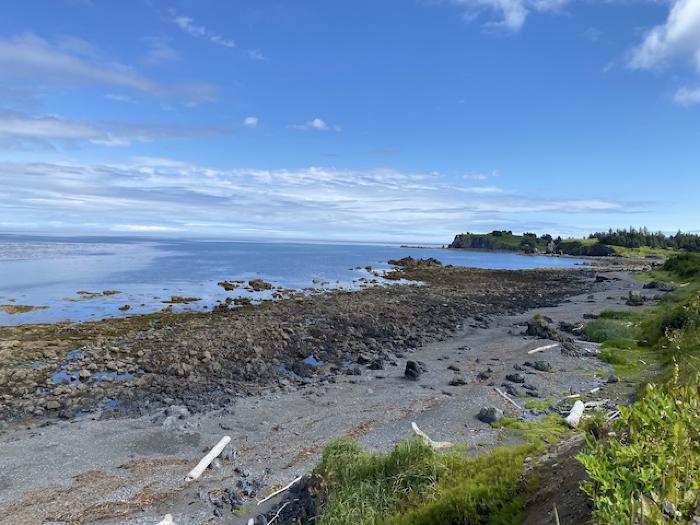Low Tide — Ken’aq

For coastal peoples, daily life is closely connected to the cycle of the tides. The ebbing and flowing of nearshore waters affect boat travel, altering currents and wave activity, water depth, and suitable boat landing locations. It also covers and uncovers important subsistence resources. In Alutiiq communities, the lowest tides of spring are eagerly awaited because they reveal a wealth of food.
Minus tides are particularly important for accessing shellfish. Although mussels can be collected during any low tide, accessing burrowing species like clams and cockles, and the chitons, urchins, and limpets that inhabit lower intertidal waters, often requires a minus tide. Throughout the year, minus tides typically occur for a few days every other week, making shellfish intermittently available. In winter, access is further limited by darkness as minus tides rarely coincide with daylight. Native people throughout the Gulf of Alaska dealt with this problem by illuminating darkened beaches with torches. Even today, residents of Akhiok will collect shellfish by lantern light.
As spring approaches, minus tides begin to coincide with daylight. This creates many more opportunities to collect intertidal resources at a time of year when fresh foods are limited and stores of food from the previous are exhausted. As Alutiiq Elders often note, “When the tide goes out, the table is set.”
